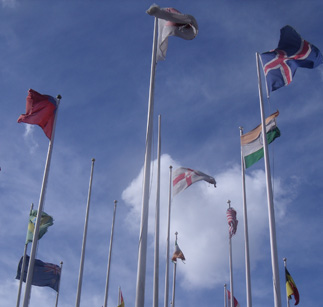The trade in illegal drugs continues to dominate serious and organised crime in the European Union, and nearly 40 per cent of the criminal networks operating at the international level reported to Europol are active in drug trafficking, according to the EU’s policing agency. Europol and the EU drugs agency (EMCDDA) has produced a report.
Europol’s Executive Director Catherine De Bolle said: “Fighting this illegal trade is a key priority for Europol and the EU. Today’s analysis supports us in understanding the market dynamics and is crucial for formulating effective law enforcement responses.”
European cocaine market is expanding, driven by unprecedented levels of trafficking leading to historically high availability. High levels of cocaine production in South America have resulted in record quantities seized in Europe. Europe is also a destination and transit zone for cocaine bound for the Middle East and Asia. More production is also now taking place inside Europe (mainly in Belgium, Spain and the Netherlands).
Cocaine is the second most commonly consumed illicit drug in the EU, after cannabis. For a fourth consecutive year, record amounts of cocaine (214.6 tonnes) were seized in Europe in 2020, a six per cent increase from 2019, suggesting high availability. Belgium (70 tonnes), the Netherlands (49t) and Spain (37t) accounted for around three-quarters of that EU total.
In 2020, nine EU states reported the dismantling of 215 methamphetamine laboratories. Historically production in Europe typically occurred in small, but widespread, ‘kitchen’ laboratories in the Czech Republic and its neighbours. While these still exist, there is now growing concern about production facilities in Belgium and the Netherlands, where methamphetamine can be produced on a considerably larger scale. Methamphetamine use on the Continent has historically been concentrated in Czechia and Slovakia, but use appears to be spreading elsewhere.
Logistical support has become a parallel business, with some criminal groups specialised in providing the chemicals, equipment and expertise needed to set up and operate production facilities. Analysis of encrypted criminal communications, through recent high-profile operations, have shown that trade is often reliant on a web of facilitators and brokers.
As for other crime; in particularly Belgium, Spain, France, Netherlands, competition between drug suppliers has intensified, resulting in an increase in violence, such as kidnappings; and spilling over to those outside the drug market (such as lawyers, government officials and journalists).
As for the effects (if any) of covid, cocaine trafficking via maritime routes continued at pre-pandemic levels. Retail drug markets were disrupted during the early lockdowns, although dealers quickly adapted using new methods (encrypted messaging services, social media apps, online sources and home deliveries).
You can view the reports on the Europol website. Further reports on the amphetamine and cannabis markets are to follow next year.
EMCDDA Director Alexis Goosdeel said: “Our new analyses show that we are now facing a growing threat from a more diverse and dynamic drug market, that is driven by closer collaboration between European and international criminal organisations. This has resulted in record levels of drug availability, rising violence and corruption, and greater health problems. In response, we need to be even more sensitive to signals coming from the market and invest in greater coordinated action, not only in Europe, but also with our international partners in producer and transit countries.”









